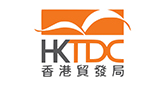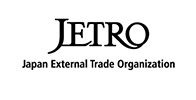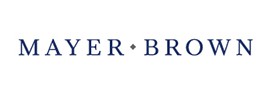Advertising & Branding Industry Market Research
Competitive Intelligence, Business Analysis, Forecasts, Market Size, Trends, Companies, Statistics
Available Data Services: Custom Research Projects, Database Subsription or PDF eBooks
PLUNKETT PROVIDES IN-DEPTH STATISTICS TABLES COVERING THE FOLLOWING INDUSTRY TOPICS:
-
Advertising & Branding Industry Statistics and Market Size Overview
-
Global Digital, Network, Computer & Telecom Industries--Key Statistics & Market Size Overview
-
Estimated U.S. Advertising Sector Revenues by NAICS Code: 2015-2022
-
Advertising Agencies, Public Relations Agencies & Direct Mail Advertising: Estimated Sources of Revenue & Expenses, U.S.: 2017-2022
-
Employment in Advertising & Related Industries, U.S.: January of 1990-2025
-
Internet Publishing & Broadcasting & Web Search Portals: Estimated Revenue & Expenses, U.S.: 2017-2022
-
Newspaper Publishers: Estimated Sources of Revenue & Expenses, U.S.: 2017-2022
-
Periodical Publishers: Estimated Sources of Revenue & Expenses, U.S.: 2017-2022
-
Radio Networks & Radio Stations: Estimated Sources of Revenue & Expenses, U.S.: 2017-2022
-
Television Broadcasting: Estimated Sources of Revenue & Expenses, U.S.: 2017-2022
-
Cable & Other Subscription Programming: Estimated Sources of Revenue & Expenses, U.S.: 2017-2022
Top Companies Profiled
The following is a partial listing for this industry. As a subscriber, you will have access to the leading companies and top growth companies. This includes publicly-held, private, subsidiary and joint venture companies, on a global basis as well as in the U.S.
Hundreds of Top Companies Profiled, Including:
PLUNKETT PROVIDES UNIQUE ANALYSIS OF THE FOLLOWING TRENDS THAT ARE DRIVING THIS INDUSTRY:
-
Introduction to the Advertising and Branding Industry
-
Loyalty Programs Battle for Members at Restaurants, Hotel Chains and Airlines/Compete with Online Travel Agencies
-
The Coronavirus’ Effect on the Advertising & Branding Industry
-
Agencies Face Both Evolving Client Needs and Vast Changes in Media
-
Global Media Giants Acquire both Content and Distribution
-
Artificial Intelligence (AI) Drives Creativity in New Ad Campaigns
-
Online Advertising Becomes More Targeted, Takes 27 Percent Share of U.S. Advertising Market
-
Online Advertising Becomes More Targeted, Takes 36.8% Share of U.S. Advertising Market
-
OpenAI (ChatGPT), StabilityAI, Anthropic (Claude) and Others Launch Impressive Tools that Generate Text, Art, Code and Smart ChatBots
-
Google and YouTube Dominate Online Video Advertising
-
Online Advertising Become More Targeted, Takes 36.8% Share of U.S. Advertising Market
-
Metaverse Provides Advertising Opportunities
-
Programmatic Ad Buying Dominates the Market
-
Global Internet Market Tops 3.2 Billion Users/Ultrafast Broadband Expands, both Fixed and Wireless
-
Television Ads Evolve to Face New Challenges, Formats and Online Competitors
-
DVR Market Evolves/Time-Shifting Hurts Advertisers
-
Embedded Advertising/Product Placement/Branded Entertainment and Marketing Soar
-
Market Research Evolves to Include Digital Interaction with Consumers/Ads May Be Consumer-Generated
-
Social Media to Generate $23.6 Billion in Global Ad Revenues
-
Email Reigns as One of the Single Most Effective Advertising Tools
-
Newspapers and Magazines See Excellent Growth in Digital Editions and Apps
-
Billboards Go Digital
-
Location-Based Technology Delivers Targeted Ads and Discounts/Mobile Advertising Grows at an Exceptional Rate
-
Private Label Brands Grow in Share of Total Store Sales
-
LOHAS-Socially Conscious Consumers Create Challenges and Opportunities for Advertisers and Marketers
-
Ad Market in China Booms
-
Hispanic Market Attracts Growing Advertising and Marketing Focus
-
Growth in Big Data Supported by Expansion of Cloud Computing and Predictive Analytics
-
Retail Technologies Advance for Store Checkout and Restaurant Orders/Apps and Location-Based Ads Drive Sales
-
Online Marketing, Social Media and Ecommerce Enable Startups and Disruption in Consumer Products and Cosmetics
-
Consulting Firms Acquire Digital Advertising Agencies, Extending Their Marketing Services
-
Regulatory Environment Is Challenging for Online Businesses and Social Media
Key Findings:
A complete market research report, including forecasts and market estimates, technologies analysis and developments at innovative firms within the Advertising & Branding Industry. Gain vital insights that can help shape strategy for business development, product development and investments.
Key Features:
- Business trends analysis
- In-depth industry overview
- Technology trends analysis
- Forecasts
- Spending, investment, and consumption discussions
- In-depth industry statistics and metrics
-
Industry employment numbers
Additional Key Features Include:
Industry Glossary
Industry Contacts list, including Professional Societies and Industry Associations
Profiles of industry-leading companies
- U.S. and Global Firms
- Publicly held, Private and Subsidiaries
- Executive Contacts
- Revenues
-
For Public Companies: Detailed Financial Summaries
-
Statistical Tables
Key Questions Answered Include:
- How is the industry evolving?
- How is the industry being shaped by new technologies?
- How is demand growing in emerging markets and mature economies?
- What is the size of the market now and in the future?
- What are the financial results of the leading companies?
- What are the names and titles of top executives?
-
What are the top companies and what are their revenues?
This feature-rich report covers competitive intelligence, market research and business analysis—everything you need to know about the Advertising & Branding Industry.
Plunkett Research Provides Unique Analysis of the Following Major Trends Affecting the Advertising & Branding Industry
-
Major Trends Affecting the Advertising & Branding Industry
-
Introduction to the Advertising and Branding Industry
-
Agencies Face Both Evolving Client Needs and Vast Changes in Media
-
OpenAI (ChatGPT), StabilityAI, Anthropic (Claude) and Others Launch Impressive Tools that Generate Text, Art, Code and Smart ChatBots
-
Digital & Search Advertising Soar/Amazon Becomes an Advertising Media Giant
-
Programmatic Ad Buying Dominates the Digital Media Market
-
Global Internet Market Tops 9.3 Billion Users, both Fixed and Wireless
-
Television Ads Evolve to Face New Challenges and Formats/Streaming Platforms Sell Ads
-
Embedded Advertising/Product Placement/Branded Entertainment and Marketing Soar
-
Social Media Rakes in Global Online and Ad Revenues
-
Email Reigns as One of the Single Most Effective Advertising Tools
-
Newspapers and Magazines Rely on Digital Editions and Apps
-
Billboards Go Digital
-
Location-Based Services (LBS) Enhance Smartphones and Mobile Advertising
-
Private Label Brands Grow in Share of Total Store Sales
-
LOHAS-Socially Conscious Consumers Create Challenges and Opportunities for Advertisers and Marketers
-
Growth in China’s Ad Market
-
Growth in Big Data Supported by Expansion of Cloud Computing and Predictive Analytics
-
Retail Technologies and Artificial Intelligence (AI) Advance for Store Checkout and Restaurant Orders
-
Online Marketing, Social Media and Ecommerce Enable Startups/Disruption in Consumer Products and Cosmetics
-
Regulatory Environment Is Challenging for Online Businesses & Social Media
Plunkett Research Provides In-Depth Tables for the Following Advertising & Branding Industry Statistics
-
Advertising & Branding Industry Statistics and Market Size Overview
-
Global Digital, Network, Computer & Telecom Industries--Key Statistics & Market Size Overview
-
Estimated U.S. Advertising Sector Revenues by NAICS Code: 2015-2022
-
Advertising Agencies, Public Relations Agencies & Direct Mail Advertising: Estimated Sources of Revenue & Expenses, U.S.: 2017-2022
-
Employment in Advertising & Related Industries, U.S.: January of 1990-2025
-
Internet Publishing & Broadcasting & Web Search Portals: Estimated Revenue & Expenses, U.S.: 2017-2022
-
Newspaper Publishers: Estimated Sources of Revenue & Expenses, U.S.: 2017-2022
-
Periodical Publishers: Estimated Sources of Revenue & Expenses, U.S.: 2017-2022
-
Radio Networks & Radio Stations: Estimated Sources of Revenue & Expenses, U.S.: 2017-2022
-
Television Broadcasting: Estimated Sources of Revenue & Expenses, U.S.: 2017-2022
-
Cable & Other Subscription Programming: Estimated Sources of Revenue & Expenses, U.S.: 2017-2022




















